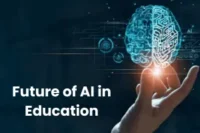AI vs Traditional Programming: Easy Comparison & Hybrid Approach
Published: 28 Oct 2025
The foundation of all computer systems and applications is programming. It gives instructions to a machine. To get software to function, developers spent years writing detailed instructions. We refer to this as traditional programming.
Things are different now. The age of artificial intelligence (AI) is upon us. AI learns from data and gets better on its own without providing precise instructions. This differs significantly from the previous coding method.
The article will provide a straightforward comparison between AI vs traditional programming. We’ll examine their functions, advantages and disadvantages, practical applications, and which one best suits your requirements.
What is Traditional Programming?
In traditional programming, programmers create precise guidelines that the machine must abide by. If the input is the same, the program operates step-by-step and produces the same outcome. It is incapable of self-learning or self-adaptation. You have to manually alter the code in order to add a new feature. Calculators and billing systems are examples of simple, fixed activities that work well with this approach.
What is AI Programming?
AI programming is a contemporary approach to software development that allows the system to learn from data rather than rigid rules. In this strategy, developers design models and algorithms that analyze data, detect patterns, and enhance performance over time.
For example, not all questions have pre-written responses in voice assistants like Siri or Alexa. They modify their replies after learning from vast volumes of data. Because of this, AI programming is adaptable and strong enough to manage challenging, dynamic tasks.
You don’t have to code every rule by hand like you would in traditional programming. Rather, you supply facts, and the machine learns to forecast or decide on its own. To put it briefly, AI programming is adaptive, data-driven, and made for intelligent automation.
If you want to understand the categories of AI systems, check out our guide on Types of AI
Key Differences Between AI and Traditional Programming
Traditional programming and AI programming operate quite differently. When the input is accurate, traditional programming always produces the same result since it follows set rules that are specified by the developer. AI programming, on the other hand, doesn’t keep to rigid guidelines. It gains knowledge from data, gets better with time, and adjusts to new circumstances. Because of this, AI is more adaptable and appropriate for complicated jobs, whereas traditional programming works better for straightforward, predictable procedures.
Comparison Table: AI vs Traditional Programming
| Feature | Traditional Programming | AI Programming |
| Approach | Fixed rules and logic | Learns from data and adapts |
| Learning Ability | Cannot learn | Learns and improves over time |
| Data Handling | Works best with structured data | Handles large and unstructured data |
| Updates | Needs manual coding for every change | Updates automatically with new data |
| Output | Always predictable | May change as model learns |
| Complex Problems | Hard to solve | Best for complex, changing tasks |
| Examples | Calculator, billing systems | Voice assistants, recommendation engines |
Pros and Cons of Traditional Programming
The earliest and most popular method of creating software is traditional programming. It is easy to run and predictable since it follows set laws and makes sense. However, it has advantages and disadvantages that you should be aware of before selecting any strategy.
| ✅ Pros of Traditional Programming |
|---|
|
| ❌ Cons of Traditional Programming |
|---|
|
Pros and Cons of AI Programming
AI programming is different from traditional methods because it learns and adapts from data. It is hence effective at complicated tasks. However, it has drawbacks as well, such as expenses and data requirements. To explore this topic in depth, you can read our detailed post on the Pros and Cons of AI.
| ✅ Pros of AI Programming |
|---|
|
| ❌ Cons of AI Programming |
|---|
|
Real-World Examples
Though they serve different functions, artificial intelligence and conventional programming are both utilized in real life. AI is utilized for intricate, data-driven applications, whereas traditional programming works best for straightforward, rule-based jobs. Here are a few examples:
Where Traditional Programming is Used
- Calculators: Follow fixed steps for addition, subtraction, etc.
- Billing Systems: Generates invoices using clear rules.
- Simple Games: Classic games like Tetris use predefined logic.
- Inventory Management: Handles structured data with clear processes.
Where AI Programming is Used
- Voice Assistants: Siri, Alexa, and Google Assistant learn from voice data.
- Recommendation Systems: Netflix and YouTube suggest content based on user behavior.
- Fraud Detection: Banks use AI to detect unusual transactions.
- Image Recognition: Used in healthcare to identify diseases in scans.
AI vs Traditional: Which One is Better for You?
AI is changing how we work and think, but is it better than traditional methods? Let’s find out which one suits you best
AI vs Traditional: Which One is Better for You?
The choice between AI and traditional programming depends on your goals, data, and project needs. Both have their strengths, but one is not always better than the other.
Choose Traditional Programming if:
- Your task is simple and rule-based.
- You need predictable results.
- You don’t have big data or advanced hardware.
Choose AI Programming if:
- Your problem is complex and data-driven.
- You need the system to learn and adapt over time.
- You want automation and advanced predictions.
Example: If you are creating a basic calculator, traditional programming is enough. But if you want to create a voice assistant, AI is the right choice.
Future Outlook
The future of programming will not be about choosing between AI and traditional methods but about combining both. AI will keep evolving, but traditional programming will remain important for basic systems. Here’s what the future looks like:
- Hybrid models will dominate: Software will use both rule-based logic and AI for smart features.
- Traditional programming will remain relevant: Essential for structured, predictable tasks.
- AI adoption will rise: AI will be used by more industries for sophisticated analytics and automation.
- AI-powered coding tools: To write, debug, and optimize code more quickly, developers will employ AI.
- Put an emphasis on innovation: Rather than writing the same old code, programmers will work on original solutions.
- AI replaces traditional methods: For better outcomes, both will work in tandem.
Conclusion
Both traditional programming and AI are crucial to software development. For straightforward, predictable jobs with constant rules, traditional programming performs well. However, complex, data-driven systems that require learning and adaptability are ideal for AI programming. In the future, combining the two will produce better results than choosing one over the other.
Before making a decision, consider your project’s objectives, available data, and financial limitations. Do you require control and stability? Use traditional programming. Do you desire intelligence and automation? AI is the best option.
Want to learn more about the latest tech trends? Keep exploring our blog for in-depth guides and expert tips!
Frequently Asked Questions [FAQs]
Here are some common questions readers often ask about AI and traditional programming:
It depends on your needs. For simple tasks, traditional programming is best. For complex, data-driven tasks, AI is better.
AI is not simply better than programming. Each plays a distinct role. Because traditional programming follows set rules, it works well for tasks that are straightforward and predictable. Though it requires programming to function, AI is superior at complicated tasks like chatbots and picture recognition. Although adaptable, AI is expensive and data-intensive. Your needs will determine whether smart automation (AI) or control and simplicity (programming) is the superior option.
AI learning uses data and algorithms to learn and improve over time without being specifically programmed. Traditional learning in programming follows fixed rules and instructions written by humans. The main difference is that AI adapts and evolves, while traditional programming stays the same unless updated manually.
While traditional programs follow specified rules and instructions provided by humans, AI systems can learn, adapt, and make judgments based on facts. Regular programs remain unchanged unless they are altered manually, but AI gets better with time.
No, AI cannot replace traditional programming. Both have their own uses and work best when combined.

- Be Respectful
- Stay Relevant
- Stay Positive
- True Feedback
- Encourage Discussion
- Avoid Spamming
- No Fake News
- Don't Copy-Paste
- No Personal Attacks

- Be Respectful
- Stay Relevant
- Stay Positive
- True Feedback
- Encourage Discussion
- Avoid Spamming
- No Fake News
- Don't Copy-Paste
- No Personal Attacks





